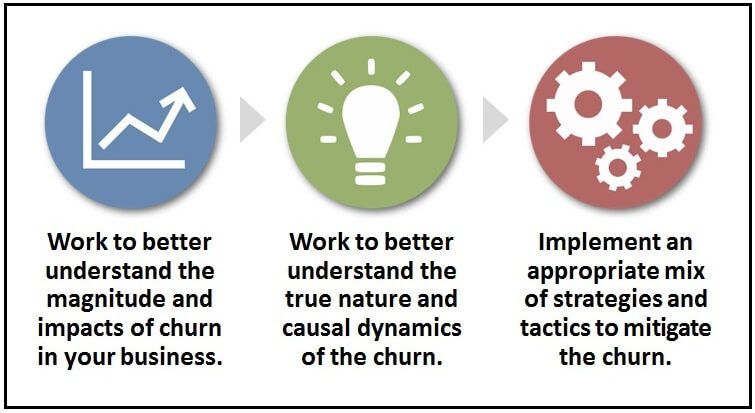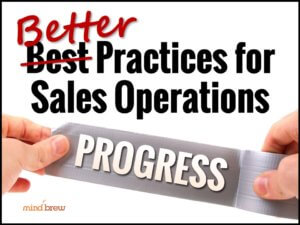Customer churn is a persistent issue that every business has to grapple with. It’s an important dynamic that can make or break a company’s growth trajectory and potentially undermine its very survival. High churn rates create an uphill battle for sales operations tasked with hitting growth targets, as the team is constantly working against attrition.
Simply put, the cost and effort needed to acquire new customers to replace the ones that have been lost is a daunting challenge that can escalate into an existential crisis if left unchecked.
In an effort to address this critical issue as quickly as possible, a lot of sales operations are tempted to jump straight into the tactics. They poke around the internet to get some ideas. Then they start layering on the bandages, ladling out the cough medicine, and so on, just checking tactics off the laundry list they’ve compiled, hoping that something will stop the bleeding.
But is this the best approach? Is this the most effective way for Sales Ops to address the issue of churn? Not even close.
As we discuss in the How to Deal With Churn webinar, there are no “one size fits all solutions” and jumping straight to the tactics skips over two crucial steps in developing the most effective approach for your particular situation.

Step 1: Work to better understand the magnitude and impacts of churn in your business.
This first step is where you get very clear about what’s actually happening in your business. You’ll use a combination of measures to understand the true magnitude of the issue and quantify the revenue and margin attrition over time. You’ll work to understand the relative impacts of churn in your business and identify where it’s happening more and/or less. And you’ll establish appropriate measurement timeframes that align to your business dynamics and expected purchasing patterns.
Step 2: Work to better understand the true nature and causal dynamics of the churn.
In this next step…the most important step…you’ll conduct analyses, test hypotheses, and work to identify the primary root causes behind the most significant and impactful portions of the churn in your business. Beyond the quantifications, you’ll interrogate all of the data at your disposal to look for common themes, tell-tale attributes, key drivers, and so on. You’ll ask and answer a wide variety of probing diagnostic questions. And in this step, you might even conduct some basic research to get the answers you need.
Step 3: Implement an appropriate mix of strategies and tactics to mitigate the churn.
And finally, having developed a much more accurate diagnosis and more well-rounded understanding of the problem, you’re now in a much better position to identify the most effective solutions and improvements. Of course, you’ll work to correct situations that are already underway. But you’ll want to prioritize strategic solutions that can address the root causes and prevent the churn from happening before it even starts.
These more strategic solutions might include initiatives such as:
- TARGETING—Refining sales and marketing’s targeting definitions to avoid “coffin nails” and focus on prospects that are inherently more sticky.
- LAND & EXPAND—Putting a program in place to systematically encourage new customers to increase their spending and spread over time.
- HEALTH CHECKS—Using internal analysts or external specialists to conduct regular “health and status” assessments of key accounts.
- WHITESPACE ANALYSIS—Analyzing account-level sales performance to identify expansion opportunities and early signs of defection.
- CHURN MODELING—Multivariate pattern recognition for identifying and surfacing the customers with higher churn probabilities.
While jumping straight into executing a bunch of tactics might give the impression of proactivity and make you feel like you’re “really getting after it,” it’s a surefire way to expend a lot of time and energy without actually fixing the problem to any meaningful extent.
The fundamental process and methodology we explain in the webinar is pretty straightforward, relatively easy to work through, and extremely effective. Yes, it will take a little more time and requires a bit more patience and thought. But fixing churn the right way is definitely worth it.














